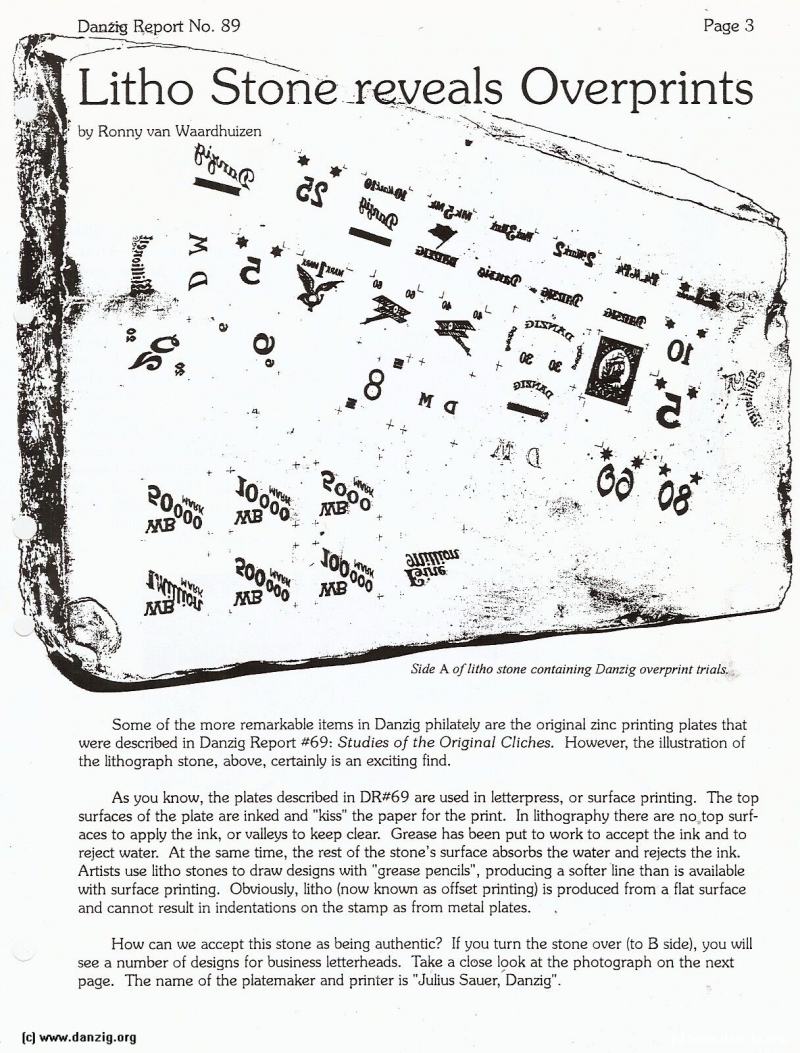
Litho Stone reveals Overprint, by Ronny van Waardhuizen
Some of the more remarkable items in Danzig philately are the original zinc printing plates that were described in Danzig Report #69: Studies of the Original Cliches. However, the illustration of the lithograph stone, above, certainly is an exciting find.
As you know, the plates described in DR#69 are used in letterpress, or surface printing. The top surfaces of the plate are inked and “kiss” the paper for the print. In lithography there are no top surfaces to apply the ink, or valleys to keep clear. Grease has been put to work to accept the ink and to reject water. At the same time, the rest of the stone’s surface absorbs the water and rejects the ink. Artists use litho stones to draw designs with “grease pencils”, producing a softer line than is available with surface printing. Obviously, litho (now known as offset printing) is produced from a flat surface and cannot result in indentations on the stamp as from metal plates.
How can we accept this stone as being authentic? If you turn the stone over (to B side), you will see a number of designs for business letterheads. Take a close look at the photograph on the next page. The name of the platemaker and printer is “Julius Sauer, Danzig”.
Danzig Report Nr. 89 - Oct - Nov - Dec - 1995, Page 3.
Hits: 4369
Added: 12/07/2015
Copyright: 2026 Danzig.org

